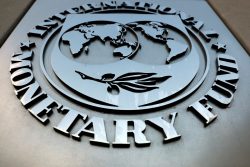NEW ORLEANS, (Reuters) – City officials warned New Orleans residents yesterday to secure their homes, stock up on supplies and prepare to huddle indoors with Tropical Storm Barry poised to make landfall as the first Atlantic hurricane of 2019.
Barry’s maximum sustained winds were clocked at 65 miles per hour (100 kph) as it churned through the northern Gulf of Mexico toward Louisiana. Meteorologists warned that torrential rains – as much as 2 feet (60 cm) in some places – are likely to unleash severe flooding.
While New Orleans authorities refrained from ordering evacuations and advised residents to shelter in place instead, tourism officials reported an exodus of hotel guests checking out early on Friday. Some airlines, including British Airways, have canceled outbound flights from the city through Saturday.
Mandatory evacuations were imposed in flood-prone coastal areas of two neighboring parishes south of the city. U.S. President Donald Trump declared a state of emergency for Louisiana, and the region’s oil production was scaled back by nearly 60 percent as energy companies evacuated offshore drilling facilities.
A performance scheduled for Sunday by the Rolling Stones at the Mercedes-Benz Superdome, which served as an emergency shelter during the Hurricane Katrina flood catastrophe of 2005, was postponed until Monday.
The impending storm was widely seen as a key test of the fortified flood defenses put in place following Katrina, which inundated much of the city and killed some 1,800 people.
Barry is expected to cross the coastline southwest of New Orleans on Saturday morning. It is forecast to reach Category-1 hurricane strength by then, with winds of at least 74 mph (119 kph), the National Weather Service said.
The storm’s flood potential, rather than its high winds, posed the greatest danger to the low-lying metropolitan landscape of New Orleans, a city virtually surrounded on all sides by rising waters.
“Tropical Storm Barry is a dangerous and life-threatening storm,” Weather Service meteorologist Benjamin Schott said at a news conference. “Major to … record flooding will be possible.”
Authorities were keeping a particularly watchful eye on the levee system built to contain the lower Mississippi River, which winds through the heart of New Orleans and was already well above flood stage from months of heavy upstream rainfall over the Midwest.
A coastal storm surge into the mouth of the Mississippi is expected to push its crest to 19 feet (5.79 m) in New Orleans on Saturday, the highest level since 1950 and dangerously close to the top of the city’s levees.
The brunt of Barry was expected to skirt the western edge of New Orleans, avoiding a direct hit. But Mayor LaToya Cantrell said 48 hours of heavy downpours could overwhelm pumps designed to purge streets and storm drains of excess water.
“There is no system in the world that can handle that amount of rainfall in such a short period,” Cantrell said on Twitter.
New Orleans was already saturated after thunderstorms drenched the city with a foot of rain on Wednesday.
“If it’s worse than the other day, it’d be the worst week since Katrina,” said musician Robert Harris, 61, polishing his trombone while sitting in a folding chair on a sidewalk.








